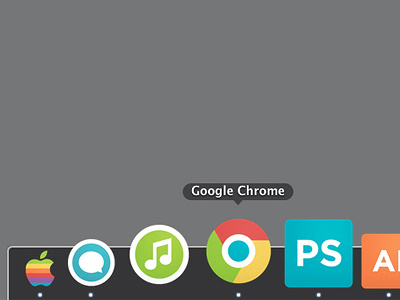

#DOCK ICONS CANDYBAR DOWNLOAD#
The drawback is you can no longer customize Dock and applications download from Mac App Store with CandyBar. Fortunately, it can still be used to customize system icons.The process to customize system icons is pretty straightforward. Move the downloaded De Anza icon set into CandyBar. You should see them in the sidebar and the preview of each icon underneath. Folder Icons Download From MacScroll down and find the list of system folder icons. Most of the icon sets take away the natural beauty of OS X. They usually stand out by themselves, ignoring other UI elements, and turn the whole OS X into a bizarre state.Click on the Finder icon on your Dock.
#DOCK ICONS CANDYBAR FOR MAC#

We have 5 copies of Dock Spaces to give away.You can go download Dock Spaces here, or take a look at our giveaway below. The Spaces integration could be easier for the average user, but the core functionality of being able to set up infinite docks is pretty great. Either that, or I need to look better into my machine’s Spaces configuration.Īt £5.00 ($7.68), Dock Spaces 4 is a no-brainer if you’ve always wanted to be able to create and manage multiple docks on your Mac. Speaking of Spaces, this app can assign a custom space setup to each dock, but I haven’t been able to get around this functionality as I guess there’s some kind of incompatibility with Hyperspaces. This is very useful as it lets you quickly restore your docks on a new installation of Snow Leopard. Unlike other apps though, Dock Spaces allows you to easily back up and restore your multiple docks settings. For instance, if you have applied a custom dock theme with Candybar, Dock Spaces will load it just fine.Īs in Hyperspaces, you can set different wallpapers for each space. Each dock has its preferences and options such as “enable bouncing icons”, “automatically hide and show the dock” or its style and position. Each new dock can be created as a copy of your active one, the OS X default one or an empty dock. You can create docks in the “Dock” tab of the settings by hitting a “+” button. Numbers are associated to the docks you have created. From the “General” panel of the app’s preferences, you can set a hotkey to quickly change between docks. You can hide both the dock and menubar icon though, and invoke Dock Spaces’ preferences via keyboard shortcut. Being a tweak that I don’t need to look at all the time, I prefer to launch it at login as a menubar app. Basing on this same concept, you can set up as many docks as you want for all the different contexts and situations you’re going to use your computer.ĭock Spaces is accessible from the dock or the menubar. Say you’re working on Photoshop and together with that you need easy access to other apps for graphic design: you can create a dock with all those apps, other than your “default” OS X dock. Just like other apps like Hyperspaces let you create multiple spaces with different preferences, Dock Spaces is a tweak that comes as a preference panel which you can use to switch between different, contextual docks. But the default dock doesn’t come with all the customization features offered by Patrick Chamelo’s Dock Spaces.ĭock Spaces, recently updated to version 4.0, enables you to set up multiple and customized docks depending on what kind of dock you need at any given time. The dock is one of the most recognizable features of the Mac, the tool that lets you access your application with just a click. Many users keep their dock at the bottom, with all the apps installed on their computer, some prefer to keep it hidden with only the most used apps – others keep it on the left.

By default, OS X allows you to set up one and only one dock on your machine.


 0 kommentar(er)
0 kommentar(er)
